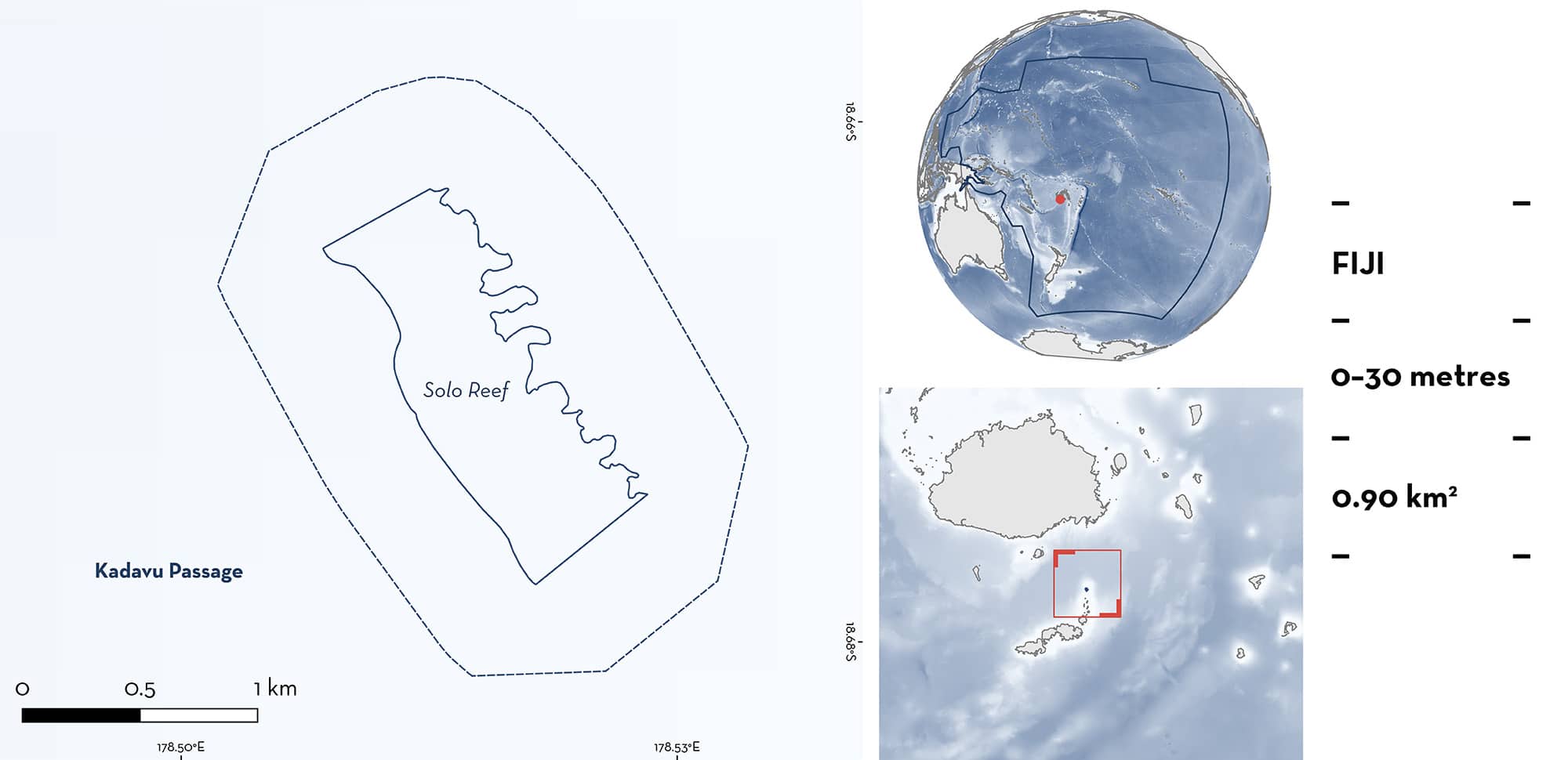ISRA FACTSHEETS
ISRA FACTSHEETS
NEW ZEALAND & PACIFIC ISLANDS REGION
Solo Reef
Summary
Solo Reef is located on an isolated atoll reef in the Kadavu region of Fiji. The area, locally known as ‘Dormitory’, is characterised by steep reef walls and a ledge with some sandy areas at 25 m depth. The area is influenced by mild currents compared to other parts of the atoll reef. Solo Reef overlaps with the Kadavu and the Southern Lau Region Ecologically or Biologically Significant Marine Area. Within this area there are: threatened species and resting areas (Whitetip Reef Shark Triaenodon obesus).
Download factsheet
Solo Reef
DESCRIPTION OF HABITAT
Solo Reef is located in the Kadavu region of Fiji. The larger reef is an atoll from a former volcano that has collapsed with erosion and is located ~1.5 km north of the tip of the Great Astrolabe Reef. The area encompasses a specific dive site (‘Dormitory’) on the southwest of the atoll. The area is characterised by steep or vertical coral reef walls covered with diverse hard and soft corals and a single ledge in 25 m depth with some sandy areas (AS Pannel & R Krebs pers. obs. 2024). The reef wall is steep to vertical at other sites on this atoll, outside the area. Currents are tidal and run parallel to the wall and underwater visibility is generally very good. Some sites on the atoll, outside the area, have strong currents, but the current is mild in this area.
This area overlaps with the Kadavu and the Southern Lau Region Ecologically or Biologically Significant Marine Area (EBSA; CBD 2024).
This Important Shark and Ray Area is benthic and pelagic and is delineated from surface waters (0 m) to 30 m based on the observations of Qualifying Species and the bathymetry of the area.
CRITERION A
VULNERABILITY
One Qualifying Species considered threatened with extinction according to the IUCN Red List of Threatened Species regularly occurs in the area. This is the Vulnerable Whitetip Reef Shark (Simpfendorfer et al. 2020).
CRITERION C
SUB-CRITERION C3 – RESTING AREAS
Solo Reef is an important resting area for one shark species.
Whitetip Reef Sharks are regularly seen resting in this area (AS Pannel & R Krebs pers. obs. 2024). They rest on a small ledge in 25 m depth along a steep wall, with an average group size of ~5 individuals (AS Pannel & R Krebs pers. obs. 2024). Some sites on the atoll, outside the area, have strong currents, but the current is mild in this area (AS Pannel & R Krebs pers. obs. 2024), suggesting a good resting potential at this site. Additionally, the reef wall of the atoll is very steep to vertical, with the ledge in this area one of the few horizontal substrates available to rest. Although this area is infrequently visited by divers, resting Whitetip Reef Sharks are seen 100% of the time. Observations are non-seasonal, with dives made in 2019 (n = 4), 2020 (n = 4), and 2024 (n = 7). Outside of the atoll, the species is also seen by recreational divers in the wider region of the Great Astrolabe Reef. However, Solo Reef has the most regular and predictable sightings and the highest number of resting Whitetip Reef Sharks.
Download factsheet
SUBMIT A REQUEST
ISRA SPATIAL LAYER REQUEST
To make a request to download the ISRA Layer in either a GIS compatible Shapefile (.shp) or Google Earth compatible Keyhole Markup Language Zipped file (.kmz) please complete the following form. We will review your request and send the download details to you. We will endeavor to send you the requested files as soon as we can. However, please note that this is not an automated process, and before requests are responded to, they undergo internal review and authorization. As such, requests normally take 5–10 working days to process.
Should you have questions about the data or process, please do not hesitate to contact us.


